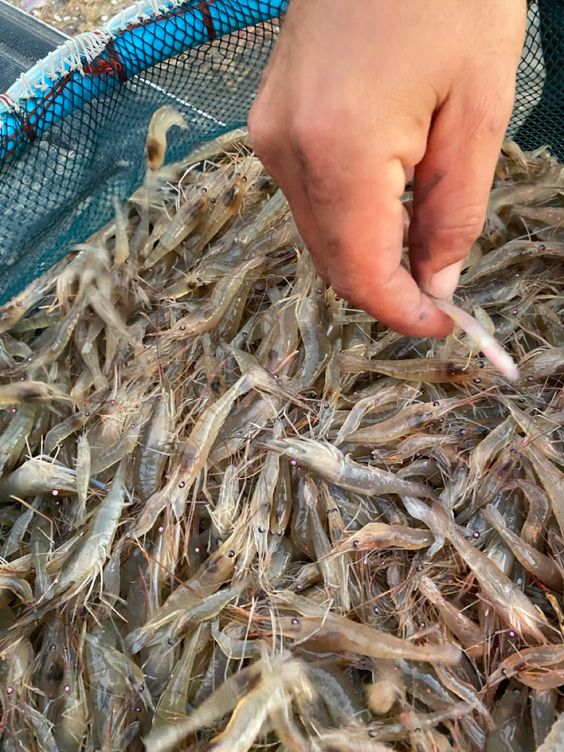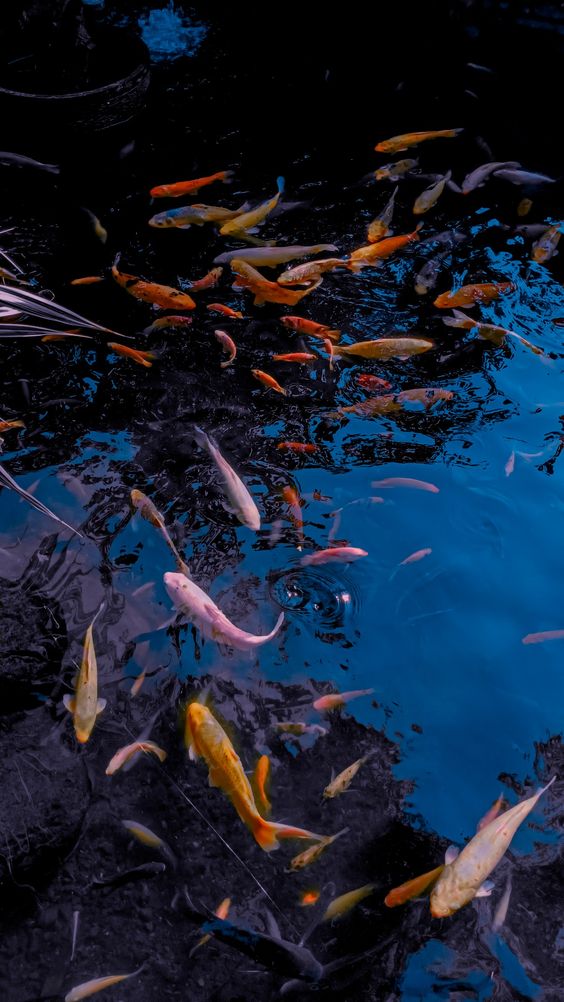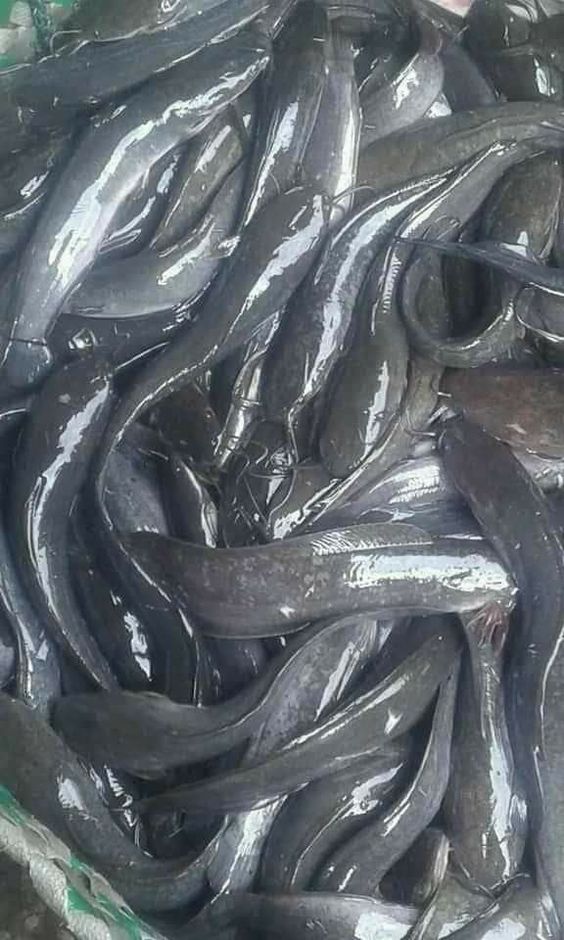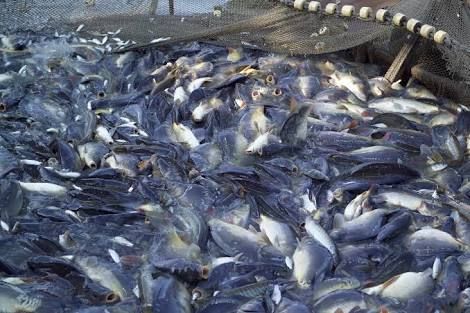Shrimp Processing: Comprehensive Guide to Industry Trends, Benefits, and Future Opportunities
Shrimp processing is a crucial step in the seafood industry, ensuring that shrimp, a highly valued commodity worldwide, is delivered to consumers in a safe, high-quality form. This process encompasses various stages, from harvesting and handling to the final packaging and distribution. As global demand for shrimp continues to rise, effective and efficient shrimp processing has become more important than ever.We will explore the technological advancements that have transformed shrimp processing, the key objectives of modern processing methods, and the benefits for producers, consumers, and the environment.
Contents
Shrimp Processing
Shrimp processing involves the conversion of raw shrimp into a marketable product that meets the required safety and quality standards. This process can vary depending on the type of shrimp being processed (wild-caught or farmed), the end product desired (fresh, frozen, cooked, or value-added), and the market for which it is intended.
The journey of shrimp from the sea to the table is a complex one, involving several critical steps:
- Harvesting: Shrimp are either caught in the wild using nets or traps or harvested from aquaculture farms. The method of harvesting can influence the quality and shelf life of the shrimp.
- Handling: Proper handling of shrimp immediately after harvesting is vital to maintaining quality. This includes rapid chilling to prevent spoilage and ensuring that the shrimp are kept in a clean, sanitary environment.
- Processing: This stage includes various steps such as washing, grading, peeling, deveining, cooking, and freezing. Each step must be carefully controlled to ensure that the shrimp retain their flavor, texture, and nutritional value.
- Packaging: Processed shrimp are packaged in different forms, including bulk packs, individual quick frozen (IQF) packs, and vacuum-sealed packs. Packaging is designed to protect the shrimp during transportation and extend their shelf life.
- Distribution: The final step involves transporting the packaged shrimp to markets around the world, ensuring they remain in peak condition until they reach the consumer.
Benefits of Shrimp Processing
Shrimp processing offers numerous benefits to both producers and consumers. Understanding these benefits is essential for appreciating the value of the processing industry and its role in the global seafood market.
- Enhanced Product Quality: Through proper processing, the quality of shrimp is significantly improved. Techniques such as rapid freezing and vacuum sealing preserve the shrimp’s freshness, taste, and texture, making it more appealing to consumers.
- Extended Shelf Life: Processing methods like freezing and vacuum packaging extend the shelf life of shrimp, allowing it to be stored for longer periods without losing quality. This is particularly important for shrimp that is transported over long distances.
- Food Safety: Processing plays a critical role in ensuring that shrimp are safe for consumption. Steps such as washing, cooking, and proper packaging reduce the risk of contamination from bacteria, viruses, and other pathogens.
- Market Expansion: By processing shrimp into various forms (e.g., cooked, peeled, or value-added products), producers can cater to different market segments and consumer preferences, expanding their market reach.
- Economic Benefits: Shrimp processing contributes significantly to the economy, providing jobs and supporting livelihoods in coastal communities where shrimp fishing and farming are prevalent.
- Environmental Sustainability: Modern processing methods are increasingly focused on sustainability, with efforts to reduce waste, improve energy efficiency, and ensure that by-products are utilized in an environmentally friendly manner.
Goals of Shrimp Processing
The goals of shrimp processing are aligned with the broader objectives of the seafood industry, focusing on quality, efficiency, sustainability, and consumer satisfaction. Here are the key goals:
- Maximizing Yield: One of the primary goals of shrimp processing is to maximize the yield from each batch of shrimp. This involves minimizing waste during processing and ensuring that as much of the shrimp as possible is used.
- Ensuring Consistency: Consistency in quality, size, and appearance is vital for meeting market demands. Shrimp processing aims to produce a uniform product that meets the expectations of buyers and consumers.
- Enhancing Safety: Food safety is a top priority in shrimp processing. The goal is to produce shrimp that are free from contaminants and safe for consumption, adhering to international food safety standards.
- Improving Efficiency: Efficient processing reduces costs, increases profitability, and ensures that shrimp are processed quickly and effectively to maintain quality.
- Sustainability: Sustainable processing practices aim to minimize the environmental impact of shrimp production and processing. This includes reducing energy and water use, managing waste responsibly, and ensuring that processing activities do not harm marine ecosystems.
- Meeting Market Demands: The global shrimp market is diverse, with varying preferences and demands. Shrimp processing must be flexible and responsive to market trends, producing products that meet the specific requirements of different regions and consumer groups.

Ideas for Shrimp Processing Innovations
Innovation is key to the continued success and growth of the shrimp processing industry. As consumer demands evolve and environmental concerns become more pressing, new ideas and technologies are being developed to improve the efficiency, quality, and sustainability of shrimp processing.
- Automation and Robotics: The use of automation and robotics in shrimp processing can increase efficiency and consistency while reducing labor costs. Automated peeling, deveining, and grading systems are already being used in some processing plants, and further advancements in this area could revolutionize the industry.
- Precision Processing: Precision processing techniques, which involve the use of advanced sensors and controls, can improve the accuracy and consistency of shrimp processing. This technology can be used to monitor and adjust processing conditions in real-time, ensuring optimal results.
- Sustainable Packaging: As consumers become more environmentally conscious, there is a growing demand for sustainable packaging solutions. Innovations in biodegradable and recyclable packaging materials can help reduce the environmental impact of shrimp processing.
- Value-Added Products: Developing new value-added shrimp products, such as ready-to-eat meals or gourmet shrimp dishes, can open up new markets and increase profitability. This can also cater to the growing demand for convenience foods.
- Waste Reduction and By-Product Utilization: Innovations in waste reduction and by-product utilization can make shrimp processing more sustainable and cost-effective. For example, shrimp shells and heads, which are often discarded, can be processed into valuable products such as chitosan, a natural biopolymer used in various industries.
- Smart Agriculture Integration: Integrating Smart Agriculture technologies into shrimp farming and processing can optimize production processes, reduce waste, and improve sustainability. This includes using data analytics, IoT devices, and AI to monitor and control processing conditions, ensuring the highest quality product.
Topic Suggestions for Further Exploration
The shrimp processing industry is vast, with many aspects that can be explored in greater detail. Here are some topic suggestions for further research and discussion:
- The Impact of Global Trade on Shrimp Processing: Analyzing how international trade agreements, tariffs, and market dynamics influence the shrimp processing industry.
- Shrimp Processing in Developing Countries: Examining the challenges and opportunities faced by shrimp processors in developing countries, including issues related to infrastructure, labor, and access to technology.
- Environmental Impacts of Shrimp Processing: Investigating the environmental effects of shrimp processing, including waste management, water usage, and energy consumption, and exploring potential solutions for reducing the industry’s ecological footprint.
- The Role of Technology in Modern Shrimp Processing: A deep dive into how cutting-edge technologies such as automation, AI, and IoT are transforming the shrimp processing industry.
- Consumer Preferences and Shrimp Product Development: Studying consumer trends and preferences in shrimp products and how processors can innovate to meet these demands.
- Quality Control in Shrimp Processing: Exploring the various methods and technologies used to ensure quality control during shrimp processing, from harvest to packaging.
Advantages of Modern Shrimp Processing
The modernization of shrimp processing has brought numerous advantages, making the industry more efficient, sustainable, and responsive to market needs. These advantages are essential for maintaining the competitiveness of shrimp products in the global market.
- Increased Efficiency: Modern processing techniques, such as automation and precision processing, have greatly increased the efficiency of shrimp processing. This has resulted in lower production costs, faster processing times, and higher throughput.
- Higher Quality Products: Advanced technologies in freezing, packaging, and quality control have enabled the production of higher-quality shrimp products. Consumers now have access to shrimp that is fresher, tastier, and more consistent in size and appearance.
- Enhanced Food Safety: Modern shrimp processing plants are equipped with state-of-the-art food safety systems that minimize the risk of contamination and ensure that the final product is safe for consumption.
- Greater Market Flexibility: The ability to produce a wide range of shrimp products, from raw to fully cooked and value-added items, has given processors greater flexibility to meet the diverse demands of global markets.
- Environmental Sustainability: With a growing emphasis on sustainability, modern shrimp processing practices are increasingly focused on reducing environmental impact. This includes adopting energy-efficient technologies, minimizing waste, and utilizing by-products.
- Economic Growth: The shrimp processing industry is a major contributor to economic growth in many coastal regions, providing jobs and supporting local communities. The modernization of the industry has further enhanced its economic impact, creating new opportunities for investment and development.
Challenges Facing the Shrimp Processing Industry
Despite its many successes, the shrimp processing industry faces a number of challenges that must be addressed to ensure its continued growth and sustainability. These challenges include environmental concerns, labor issues, and the need for technological innovation.
Environmental Challenges
The shrimp processing industry, particularly in regions with large aquaculture operations, has been criticized for its environmental impact. Issues such as mangrove deforestation, water pollution, and the use of chemicals in shrimp farming have raised concerns among environmentalists and consumers alike.
- Mangrove Destruction: In some regions, shrimp farming has led to the destruction of mangrove forests, which are crucial for coastal protection and biodiversity. This has prompted calls for more sustainable farming practices that minimize the impact on these vital ecosystems.
- Water Pollution: The discharge of waste and chemicals from shrimp farms and processing plants can lead to water pollution, affecting both marine life and local communities. To address this, the industry is increasingly adopting practices such as recirculating aquaculture systems (RAS) and waste treatment technologies that reduce environmental harm.
- Sustainable Sourcing: Consumers and regulators are increasingly demanding that shrimp be sourced from sustainable and responsible operations. This has led to the growth of certification programs, such as the Aquaculture Stewardship Council (ASC) and the Global Aquaculture Alliance’s Best Aquaculture Practices (BAP), which promote sustainable shrimp production and processing.
Labor Issues
The shrimp processing industry is labor-intensive, particularly in regions where manual processing is still prevalent. This has led to concerns about labor conditions, including low wages, long working hours, and the exploitation of workers.
- Labor Rights: Ensuring fair labor practices and improving working conditions in shrimp processing plants is a growing priority. This includes providing fair wages, safe working environments, and opportunities for skill development.
- Automation and Labor Displacement: The introduction of automation in shrimp processing has raised concerns about the displacement of workers. While automation can improve efficiency and reduce costs, it can also lead to job losses, particularly in regions where the workforce is heavily reliant on the shrimp industry.
Technological Challenges
The shrimp processing industry is rapidly evolving, with new technologies being introduced to improve efficiency, quality, and sustainability. However, the adoption of these technologies can be challenging, particularly for small and medium-sized enterprises (SMEs) in developing countries.
- Access to Technology: Smaller processors often face difficulties in accessing and affording the latest processing technologies. This can put them at a disadvantage in the global market, where larger players are able to invest in advanced equipment and processes.
- Training and Skill Development: The introduction of new technologies requires workers to develop new skills and adapt to changing job roles. This necessitates investment in training and education programs to ensure that workers are able to operate and maintain advanced processing equipment.
- Data Management and Traceability: As consumers and regulators demand greater transparency in the seafood supply chain, the shrimp processing industry must invest in data management and traceability systems. Implementing these systems can be complex and costly, particularly for smaller processors.

Future Trends in Shrimp Processing
The shrimp processing industry is poised for significant changes in the coming years, driven by technological advancements, changing consumer preferences, and growing environmental concerns. Understanding these trends is essential for industry players who wish to stay competitive and meet the evolving demands of the global market.
Technological Innovations
As technology continues to advance, the shrimp processing industry is likely to see the adoption of even more sophisticated systems and processes. Key technological trends include:
- Artificial Intelligence (AI) and Machine Learning: AI and machine learning can be used to optimize various aspects of shrimp processing, from quality control to logistics. For example, AI-powered vision systems can be used to grade shrimp based on size and quality with greater accuracy and speed than traditional methods.
- Blockchain for Traceability: Blockchain technology offers a secure and transparent way to track shrimp from farm to table. This can enhance traceability, reduce fraud, and build consumer trust in the products they purchase.
- Advanced Packaging Technologies: Innovations in packaging, such as modified atmosphere packaging (MAP) and active packaging, can extend the shelf life of shrimp products and improve their safety and quality. These technologies are likely to become more widespread as processors seek to meet the demands of global markets.
Sustainability and Ethical Sourcing
As consumers become more environmentally and socially conscious, the demand for sustainably sourced and ethically produced shrimp is expected to grow. This trend will drive the adoption of more sustainable farming and processing practices, as well as the development of certification programs that guarantee the integrity of shrimp products.
- Eco-Friendly Practices: Processors will need to adopt eco-friendly practices, such as reducing energy consumption, minimizing waste, and sourcing shrimp from sustainable operations. This will not only meet consumer demand but also help protect the environment and ensure the long-term viability of the industry.
- Ethical Sourcing: Ensuring that shrimp are sourced from operations that adhere to fair labor practices and respect workers’ rights will become increasingly important. Companies that prioritize ethical sourcing are likely to gain a competitive advantage in the marketplace.
Market Diversification and Product Innovation
The global shrimp market is becoming increasingly diverse, with consumers seeking new and innovative products. This presents opportunities for processors to diversify their offerings and explore new market segments.
- Value-Added Products: The demand for value-added shrimp products, such as ready-to-eat meals and gourmet shrimp dishes, is expected to grow. Processors who can develop unique and high-quality value-added products will be well-positioned to capitalize on this trend.
- Niche Markets: There is also potential for growth in niche markets, such as organic shrimp, sustainably farmed shrimp, and products tailored to specific dietary needs. By tapping into these markets, processors can differentiate themselves and attract a loyal customer base.
- Global Expansion: As the global middle class continues to grow, particularly in emerging markets, the demand for high-quality shrimp products is likely to increase. Processors who can expand their reach into new regions and adapt their products to local tastes and preferences will be able to take advantage of these new opportunities.
Shrimp processing is a vital component of the global seafood industry, providing consumers with high-quality products that are enjoyed around the world. The industry has made significant strides in improving efficiency, sustainability, and product quality, but it also faces challenges that must be addressed to ensure its continued success.






